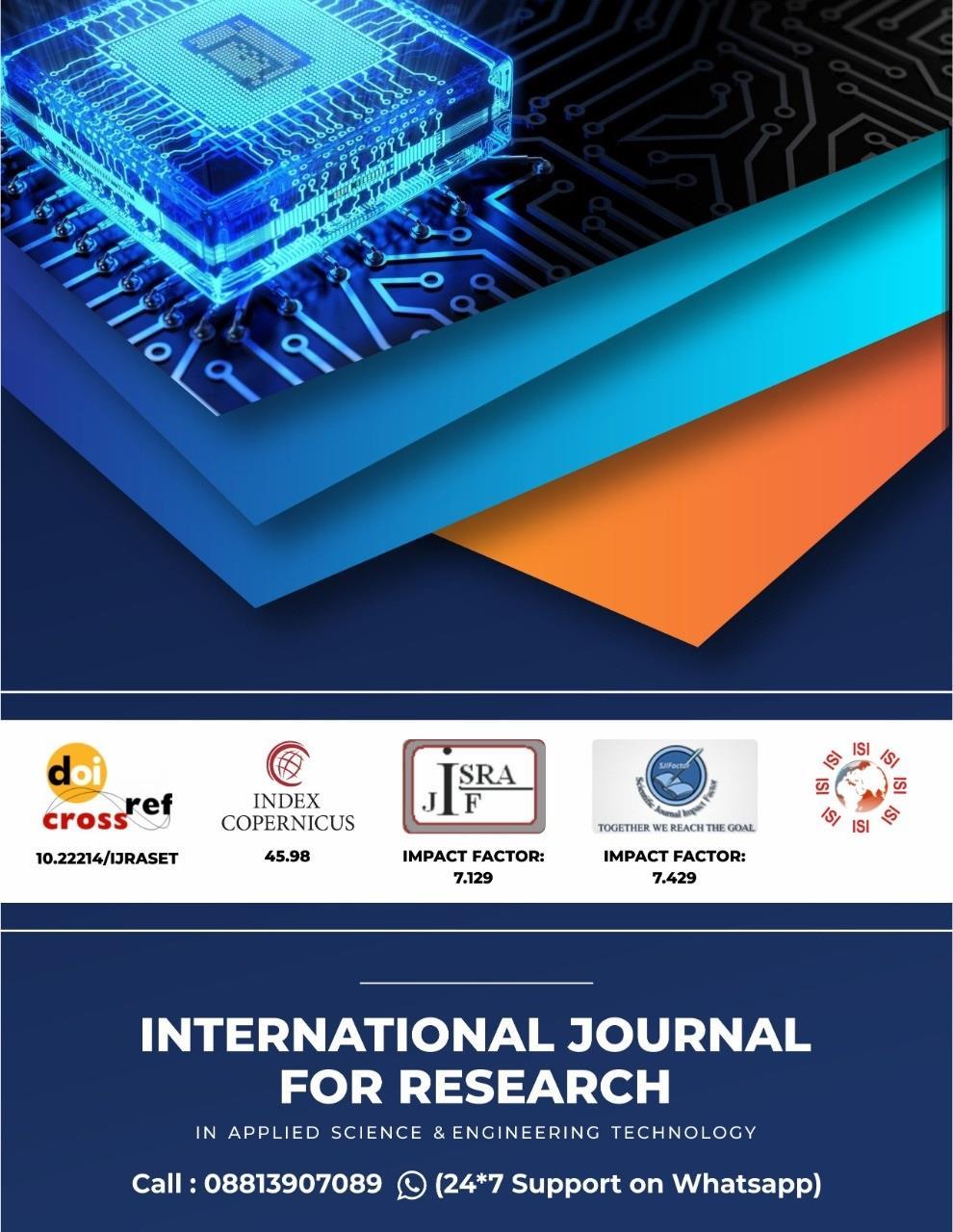
ISSN: 2321 9653; IC Value: 45.98; SJ Impact Factor: 7.538

Volume 10 Issue XI Nov 2022 Available at www.ijraset.com


ISSN: 2321 9653; IC Value: 45.98; SJ Impact Factor: 7.538

Volume 10 Issue XI Nov 2022 Available at www.ijraset.com
1
Abstract: Sewer monitoring is an important aspect of maintaining cleanliness around us. Lack of sewage monitoring systems may lead to blockage of the drainage. These blockages in sewers may lead to sewer flooding and pollution. Sometimes, workers may meet with accidents as they might not be aware of the condition inside the manhole. This paper aims to measure and analyze the real time levels of sewage. In order to ensure safety of the workers working under some severe conditions. This project attempts to devise an IOT technology that shall detect the level of sewage in the tunnel while keeping track of flow rate of it. If the level exceeds beyond threshold, it shall send an alert through the blynk web app. Additionally provide the information about the flow through the blynk web app itself. To obtain the desired output ultrasonic sensor, flow sensor, nodemcu esp8266, Arduino Uno and blynk web app are used in the proposed model.
Keywords: Internet of Things, Smart City, IOT, Nodemcu Esp8266, Ultrasonic Sensor, Flow Sensor, Blynk
Every city needs the Internet of Things. Population of India is increasing rapidly day by day. It will increase more in the future, with even denser populations. Smart solutions can be created using connected technologies and big data. These solutions can solve problems, improve the quality of life for city dwellers, and reduce resource consumption. The Internet of Things is a necessary component for a truly smart city to function at its maximum potential. Monitoring the underground drainage system plays a very important role in keeping the city clean. The population is growing very fast and many problems are faced in Smart Cities. In India, the process to monitor and maintain the drainage system is done manually. Current improvements and sophistication in planning are essential in the modern environment. Wastewater consists of solid and liquid waste generated from hospitals, factories, factories, and households. Dangerous gasses are released from these wastes, affecting the health of people. When sewer workers are exposed to the toxic gas, they are more likely to be affected by illnesses such as paratyphoid fever, hepatitis and even death. Manual drainage pipe monitoring and cleaning is required, but too long cleaning can create an unhealthy environment and spread many illnesses. Sewage management is a critical component of urban infrastructure, and it has a direct impact on our daily hygiene. Poor sewage management can result in urban flooding, which is especially common in densely populated areas. IoT Based Smart Sewage Monitoring System for Smart City can help solve this problem.
In IoT Based Underground Drainage Monitoring System Paper (2020), G Chandhini, B Chithra, P Kiruthikadevi, Bhagya Sasi and V. Kamal Kumar presented the project. The primary goal of this project is to create a network system that aids in the monitoring of dangerous gasses found in sewage. The information with different gas ppm levels is presented in the smartphone through the app if the gas level reaches the threshold value. It also reveals whether working in the environment is safe for manual scavengers.[1] In a paper sewage level maintenance using IoT (2018), G. Gowthaman, K. Hari Haran, G. Keerthee Rajan and A. Sweeto Jeiso proposed a solution for the creation of an IoT based sewage level maintenance system, with the sewage level being monitored using a magnetic float level sensor. A sensor that detects sewage level, a controller that orders, and a communication network that records complaints about continual sewage level rises and, if any, blockages are all part of the system design. A database must be kept in order to keep track of the information. Prior to overflow, the system provides warning signals in the form of complaints sent via mail and SMS to the appropriate departments.[2]
In a paper, Authors proposed a project that aims to create an IoT system that can detect humidity, temperature levels, and gas mixtures, sensing each type of gas to measure its level while keeping track of the above parameters' real time dynamic changes. It will send a warning to the connected mobile devices of the approved people who are remotely located in the job if the levels rise above the threshold.[3]

ISSN: 2321 9653; IC Value: 45.98; SJ Impact Factor: 7.538 Volume 10 Issue XI Nov 2022 Available at www.ijraset.com
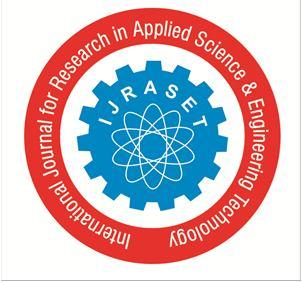
In another paper IoT Based Smart Sewage Monitoring System using GSM and Wi Fi Module (2021), authored by Priya Tiwari, a system model with the goals to develop a low cost, economical and adaptable solution for detecting clogs and stink or unpleasant odor gasses is proposed . To get the necessary output from the module, this model uses a regulator circuit, sensor driver circuit, microcontroller, serial communication devices, and IoT module.[4]
Samiha Sultana, Ananya Rahaman, Anita Mahmud Jhara, Akash Chandra Paul, Jia Uddin proposed a warning system that uses GSM and IOT to convey sensed data to managing authorities in order to avert such incidents before they have an impact on the public in a paper An IOT based Smart Drain Monitoring System with Alert Messages.(2021) [5]
In another paper A Real Time Smart Wastewater Monitoring System Using IoT: Perspective of Bangladesh, Muhammed Sakib Hasan, Shahjalal Khandaker, Md. Shahid Iqbal, Md. Monirul Kabir proposed a new model for real time Smart Wastewater Monitoring System (SWMS) in Bangladesh that makes use of the Internet of Things (IoT). Different industries have their own production schemes and use different types of chemicals and raw materials.[6]


The proposed methodology is based on IoT, which helps in monitoring the level and flow rate of sewage. As shown in Fig.1, it consists of an ultrasonic sensor, flow sensor, float sensor, NodeMCU ESP2866 and Arduino Uno. NodeMCU and Arduino will need a power supply. NodeMCU will be connected to the blynk app. Fig.1 Block Diagram for the proposed System

ISSN: 2321 9653; IC Value: 45.98; SJ Impact Factor: 7.538 Volume 10 Issue XI Nov 2022 Available at www.ijraset.com

NodeMCU is an open source IoT platform with a low cost. NodeMCU is a Lua based open source firmware and development board specifically for IoT based applications. In the proposed system, it is the main component to which the ultrasonic sensor and blynk web app are connected.
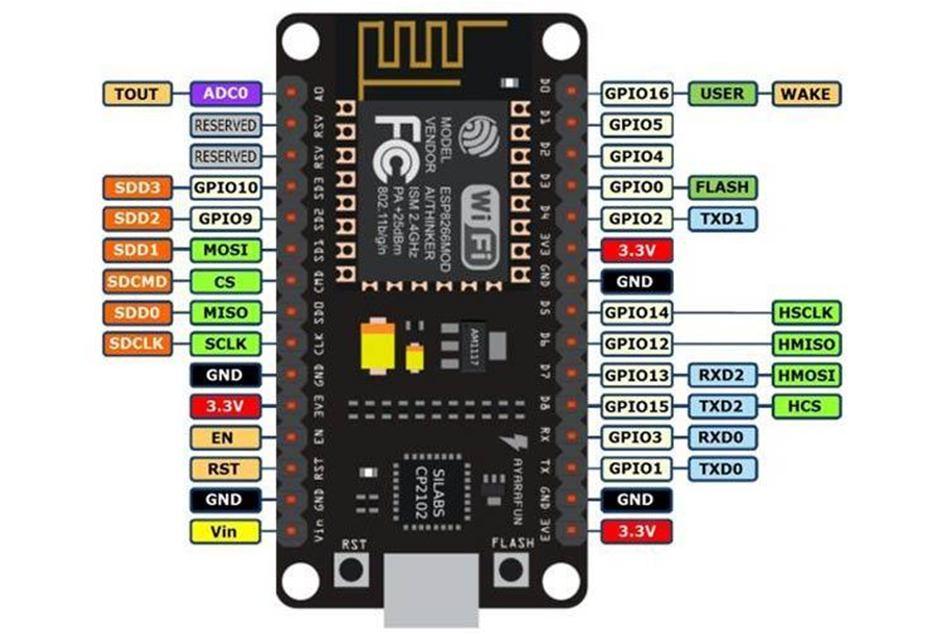
The Arduino UNO is an inexpensive, flexible and easy to use open source programmable microcontroller board that can be integrated into a variety of electronic projects. In the proposed system, it is another main component to which the flow sensor and float sensor are connected.

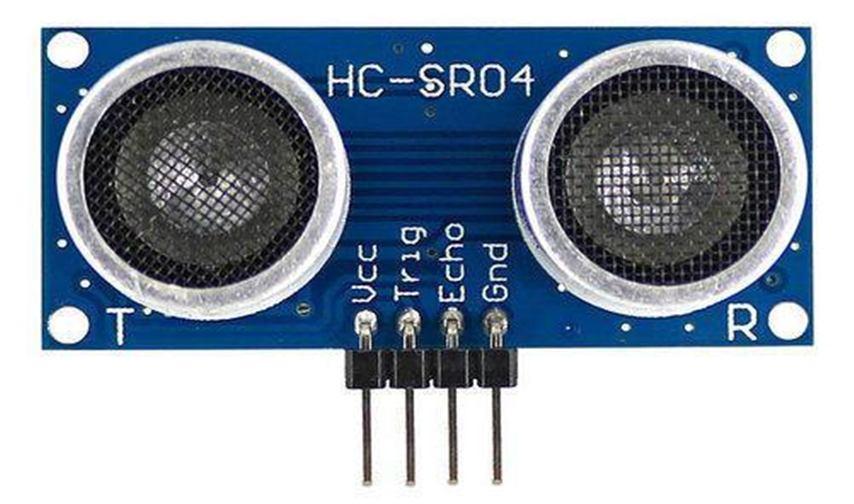
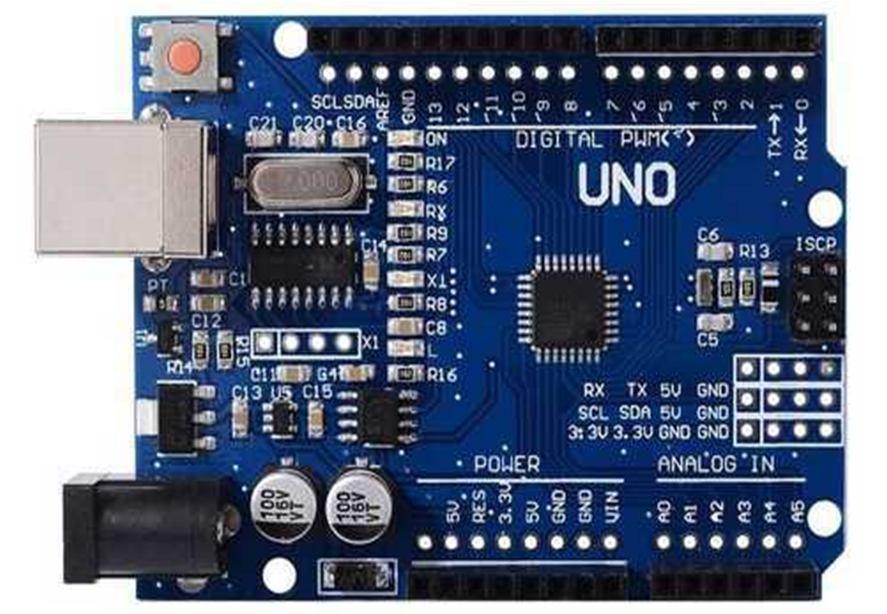
Ultrasonic sensors generate or detect ultrasonic energy. The electrical signal emitted by the ultrasonic signal is amplified and processed to detect reflected echoes and calculate distance from a specific target. In the proposed system it is connected to a blynk web app through nodeMCU to monitor the level of sewage inside the tank.
ISSN: 2321 9653; IC Value: 45.98; SJ Impact Factor: 7.538 Volume 10 Issue XI Nov 2022 Available at www.ijraset.com

A flow sensor or flow meter is an electronic device that measures or controls the flow rate of a liquid or gas in a pipe or tube. In the proposed system, a flow sensor is connected to Arduino UNO to measure the flow rate of sewage.
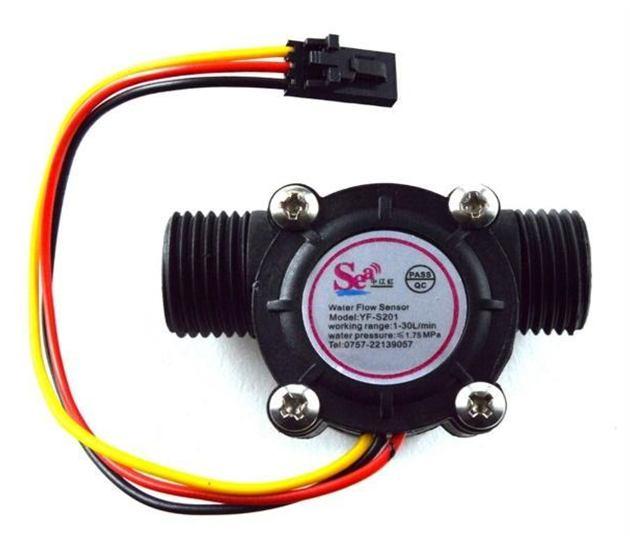
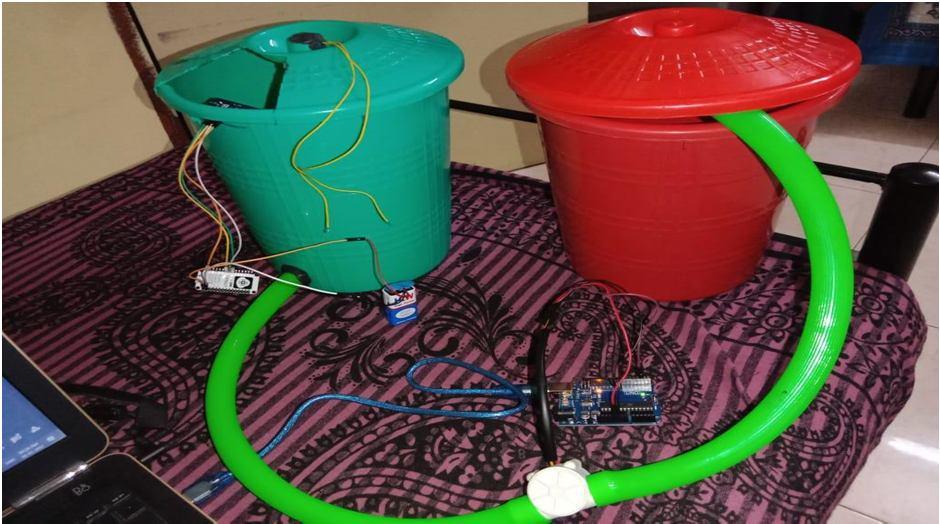

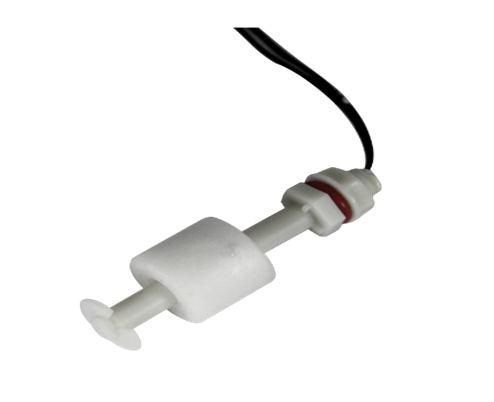
The float level sensor is a continuous level sensor with a magnetic float that moves up and down as the liquid level changes. In the proposed system, a float sensor is connected to Arduino Uno to give an alert to users when the level of sewage reaches its threshold inside the tank.
The ultrasonic sensor monitors the level of sewage inside the tank. A float sensor checks whether the level of sewage inside the tank reaches its threshold or not. And the flow sensor measures the flow rate of sewage. Whenever the sewage level crosses the threshold value, the sewage workers are alerted through a blynk indicating whether it is necessary or not to clean the sewage. This system helps in monitoring sewage level through ultrasonic sensor and monitoring flow rate through flow sensor and receiving notification on sewage level reaching its threshold value, therefore helping sewage workers to take decisions for cleanliness and also maintain a healthy and disease free environment.
The system is thereby comprised with ultrasonic sensor, float sensor and flow sensor which helps to monitor the sewage. Blynk Web App is used to display the level of water in the sewer The flow rate of water while carrying out the experiment was observed to be in between 500 1360 litres/hour as shown in Fig. 3. Fig. 2 Experimental Set Up
ISSN: 2321 9653; IC Value: 45.98; SJ Impact Factor: 7.538 Volume 10 Issue XI Nov 2022 Available at www.ijraset.com
Fig. 3 Flow Rate Observation on Serial Monitor
Fig.4 Water Level and Status visualized on Blynk App


In implementation of this project, the valve was controlled manually and also ESP8266 and Arduino were used together for implementation of the project. So furtherly project can be developed with Wi Fi Module ESP8266 alone and implementation of automatic valve control can be done. Additionally, the project can make use of a gas sensor to detect the gas level , which may help sewage workers to decide whether it is safe to work in the environment or not.
A preventative system prevents or eliminates sewage overflow on roads, which is a major concern in many communities. The ultrasonic sensors are effectively used, and the system is designed with a socially relevant concept in mind, resulting in an impact on hygiene and cleanliness by simply avoiding the problem of overflowing on streets, as well as ensuring mandatory cleaning of blockages that cause the sewage level to rise by registering repeated complaints to random departments unless action is taken.
[1] G Chandhini, B Chithra, P Kiruthikadevi, Bhagya Sasi, V. Kamal Kumar, “IoT Based Underground Drainage Monitoring System”, International Journal of Recent Technology and Engineering (IJRTE) ISSN: 2277 3878 (Online), Volume 9 Issue 3 September 2020
[2] B. Sumathy, G. Gowthaman, K. Hari Haran, G. Keerthee Rajan, A. Sweeto Jeiso, “Sewage Level Maintenance Using Iot”, International Journal of Mechanical Engineering and Technology (IJMET) Volume 9, Issue 2, February 2018, pp. 389 397
[3] Anushka Pendharkar, Jyothi Chillapalli, Kanksha Dhakate, Subhalaxmi Gogoi, Yogesh Jadhav, “IoT based Sewage Monitoring System”, Conference Paper in SSRN Electronic Journal · October 2020

[4] Priya Tiwari, “IoT Based Smart Sewage Monitoring System using GSM and Wi Fi Module”, International Journal of Innovative Science and Research Technology ISSN No: 2456 2165, Volume 6, Issue 5, May 2021
[5] Samiha Sultana, Ananya Rahaman, Anita Mahmud Jhara, Akash Chandra Paul, Jia Uddin, “An IOT based Smart Drain Monitoring System with Alert Messages”, 2021, DOI:10.1007/978 3 030 68452 5_9
[6] Muhammed Sakib Hasan, Shahjalal Khandaker, Md. Shahid Iqbal, Md. Monirul Kabir, “A Real Time Smart Wastewater Monitoring System Using IoT: Perspective of Bangladesh”, 2020 2nd International Conference on Sustainable Technologies for Industry 4.0 (STI), 19 20 December, Dhaka
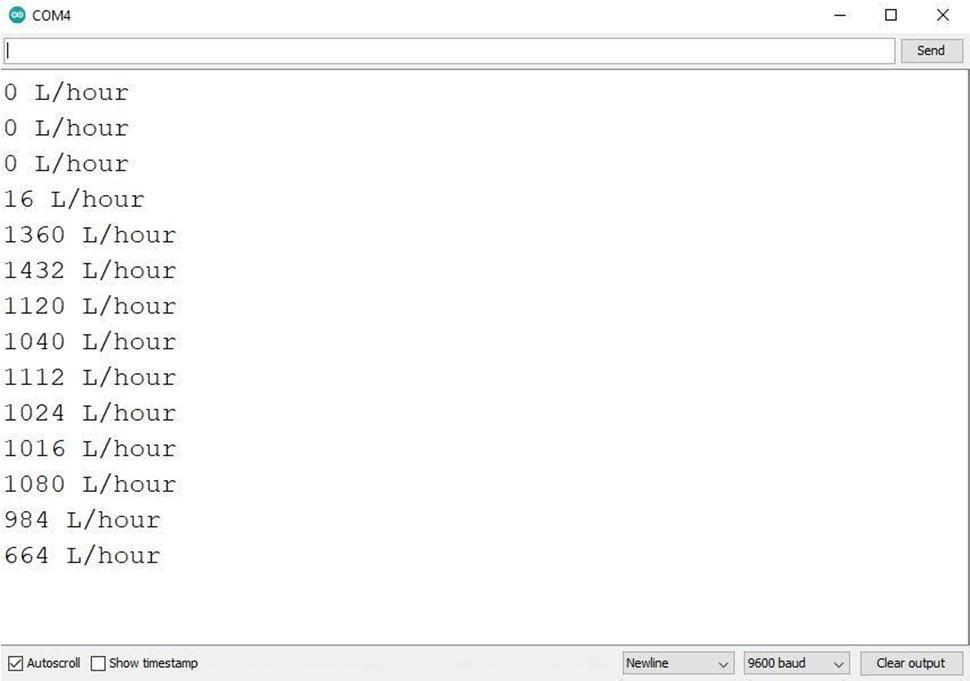
[7] Rony, J.H.; Karim, N.; Rouf, M.A.; Islam, M.M.; Uddin, J.; Begum, M. A Cost Effective IoT Model for a Smart Sewerage Management System Using Sensors. J 2021, 4, 356 366. https://doi.org/10.3390/j4030027
[8] Chunbo Xiu1, Liying Dong, “Design of Sewage Treatment Monitoring System Based on Internet of Things”, The 31th Chinese Control and Decision Conference (2019 CCDC), 978 1 7281 0106 4/19/$31.00 c 2019 IEEE
[9] Chillapalli, Jyothi & Jadhav, Yogesh. (2020). IoT based Sewage Monitoring and Alert System using Raspberry PI. International Journal of Scientific Research in Computer Science, Engineering and Information Technology. 10.32628/CSEIT12064114.
[10] Nitin Asthana, Ridhima Bahl, “IoT Device For Sewage Gas Monitoring And Alert System”
Applied Science & Engineering Technology (IJRASET)


ISSN: 2321 9653; IC Value: 45.98; SJ Impact Factor: 7.538 Volume 10 Issue XI Nov 2022 Available at www.ijraset.com
[11] M. Lizzy Nesa Bagyam, B. Raja Nithya, D. Rubikumar, S.Sangeetha , J.Santhosh, “Smart Sewage Alert System For Workers In Real Time Applications Using Iot”, INTERNATIONAL JOURNAL OF SCIENTIFIC & TECHNOLOGY RESEARCH VOLUME 9, ISSUE 02, FEBRUARY 2020 ISSN 2277 8616
[12] Tushar Pathak, Sanyogita Deshmukh, Pooja Reddy, Prof H. P. Rewatkar, “Smart Drainage Monitoring and Controlling System Using IOT”, International Journal of Research in Engineering and Science (IJRES) ISSN (Online): 2320 9364, ISSN (Print): 2320 9356
[13] Saiesh R, Prasad Ainapur, Sanil Sanjay Wadakar, Ritik Sharma, Dr. Sayed Abdulhayan, “Underground Drainage Monitoring System”, Journal of Communication Engineering and Its Innovations Volume 5 Issue 1
[14] Aditya Patel, Parth Dave, Aatish Patel, “Drainage Monitoring System Using IoT”, International Journal for Research in Engineering Application & Management (IJREAM) ISSN : 2454 9150 Vol 06, Issue 08, NOV 2020, DOI : 10.35291/2454 9150.2020.0673
[15] Gaurang Sonawane, Chetan Mahajan, Anuja Nikale, Yogita Dalvi, “Smart Real Time Drainage Monitoring System Using Internet of Things”, MAY 2018 |IRE Journals | Volume 1 Issue 11 | ISSN: 2456 8880
